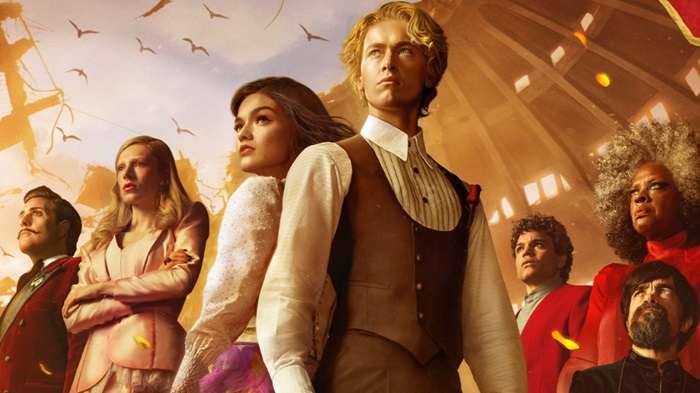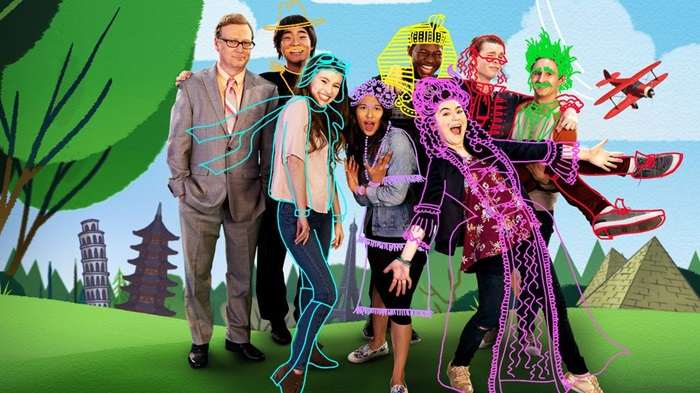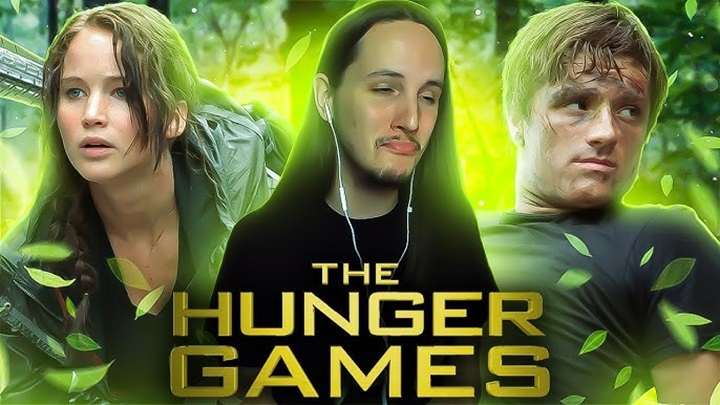The Hunger Games film series, based on the wildly successful book trilogy by Suzanne Collins, catapulted itself into the ranks of iconic dystopian sagas like Harry Potter and The Lord of the Rings. What began as a young adult novel turned into a global phenomenon, resonating with people of all ages. It wasn’t just a thrilling cinematic experience but also a potent commentary on power, resistance, and survival. In this article, we’ll take a deep dive into the world of The Hunger Games film series, examining its narrative arc, the unforgettable characters, its socio-political implications, and the legacy it has left behind.
Origins of the Hunger Games Universe

The foundation of The Hunger Games lies in a dystopian future where the nation of Panem is divided into the Capitol and 12 (formerly 13) districts. Each year, as punishment for a past rebellion, the Capitol forces each district to send a boy and a girl, known as “tributes,” to participate in the Hunger Games: a televised fight to the death. The concept of gladiatorial combat mixed with reality television makes the premise gripping from the outset. The combination of authoritarian control, voyeurism, and survival forms the backbone of the series, offering audiences a thought-provoking experience far beyond typical action films.
Suzanne Collins’ Vision
Collins’ inspiration came from channel surfing between a reality TV show and war footage, and this fusion birthed the unique concept of the Hunger Games. At its core, the series critiques media’s desensitizing impact and questions the moral cost of entertainment at the expense of human suffering. When adapted into films, these themes were visually translated into the Capitol’s extravagant pageantry and the districts’ stark, oppressed environments, creating a sharp contrast between excess and poverty.
The Films: A Cinematic Journey
The Hunger Games film series consists of four movies:
- The Hunger Games (2012)
- Catching Fire (2013)
- Mockingjay – Part 1 (2014)
- Mockingjay – Part 2 (2015)
The Hunger Games (2012): A Brutal Introduction
Directed by Gary Ross, the first film introduces us to Katniss Everdeen, a 16-year-old girl from District 12, played with raw emotion by Jennifer Lawrence. When her younger sister, Prim, is chosen to participate in the 74th Hunger Games, Katniss volunteers in her place. Alongside Peeta Mellark (played by Josh Hutcherson), Katniss is thrust into the deadly arena, where she must outwit both the Capitol and her fellow tributes to survive.
The movie captivated audiences with its stark portrayal of violence and survival. The depiction of the Capitol’s garish fashion and excess contrasted sharply with the bleakness of District 12, drawing attention to the disparity in wealth and privilege. Lawrence’s portrayal of Katniss—fierce, independent, and conflicted—immediately struck a chord with audiences. Her ability to switch between vulnerability and strength made Katniss a revolutionary female lead in the genre.
Catching Fire (2013): Rising Tensions
Catching Fire, directed by Francis Lawrence, expanded the world of Panem and intensified the stakes. After their victory in the 74th Hunger Games, Katniss and Peeta become symbols of hope for the oppressed districts. However, the Capitol, under the iron rule of President Snow (played by Donald Sutherland), sees them as threats to its control. To eliminate the growing resistance, Snow throws Katniss and Peeta back into the arena for the Quarter Quell, a special edition of the Hunger Games that pits previous victors against each other.
The sequel’s darker tone and political overtones resonated deeply with viewers. Catching Fire showcased the building momentum of rebellion while continuing to explore Katniss’ internal struggles—her loyalty to Peeta and Gale Hawthorne (played by Liam Hemsworth), her moral dilemmas, and her reluctance to become a symbol of revolution. The film’s action sequences, particularly the tropical arena, were visually stunning, balancing excitement with the underlying tension of imminent war.
Mockingjay – Part 1 (2014): The War Begins
As the rebellion gains momentum, Mockingjay – Part 1 dives into the complexities of war, propaganda, and leadership. Katniss finds herself in the underground District 13, where she must assume the mantle of the Mockingjay, the symbol of the revolution. Directed again by Francis Lawrence, the first half of the final installment takes a slower pace, focusing on the psychological toll of war on Katniss and her comrades. Unlike the previous films’ intense action sequences, this one leans into the strategies of revolution, showing how both sides manipulate media to win hearts and minds.
Some fans felt the decision to split the final book into two films dragged the pacing, but it allowed the filmmakers to explore deeper themes. The psychological trauma Katniss faces, along with the growing tension between her and Peeta—who is now a pawn of the Capitol—makes the film a slow burn that builds toward the final conflict.
Mockingjay – Part 2 (2015): A Fiery Conclusion
The final chapter of the series, Mockingjay – Part 2, takes Katniss, now fully entrenched in the rebellion, to the front lines of the war against the Capitol. This film is packed with action, heartbreak, and devastating twists. The moral ambiguity of the war, especially in the decisions made by President Coin (played by Julianne Moore), is brought to the forefront. Katniss, struggling to determine who can be trusted, must ultimately face both her inner demons and the external forces vying for control of Panem.
The final film was a poignant end to the series, delivering a bittersweet victory that left audiences questioning the true cost of freedom. The deaths of key characters, especially Prim, were gut-wrenching and underscored the personal toll of the revolution. Katniss’ eventual decision to kill Coin instead of Snow demonstrated the complexity of leadership and the dangers of unchecked power, even within a revolution.
Themes and Symbolism: More Than a Dystopia
While The Hunger Games is a dystopian saga, it goes far beyond surface-level entertainment, delving into themes of inequality, power, and human nature. The series uses its dystopian setting as a mirror to our world, asking hard-hitting questions about the nature of government, rebellion, and the role of the individual in the face of oppression.
Power and Control
The Capitol’s control over the districts is an explicit commentary on authoritarian regimes. Through the Hunger Games themselves, the Capitol exerts its dominance, using fear and spectacle to maintain order. This is reminiscent of historical events where leaders have used violence and propaganda to subjugate the masses. The series explores the corrupting influence of power, as seen in both Snow and, later, Coin.
Resistance and Rebellion
The rebellion in The Hunger Games reflects the timeless struggle for freedom. The districts’ uprising against the Capitol mirrors real-world revolutions, where oppressed populations rise against tyrannical rulers. However, the series is careful to show that revolutions are not clean-cut victories; they come with sacrifices and moral compromises.
Media Manipulation
The idea of the Hunger Games as a televised event is a direct critique of the way media can desensitize audiences to violence and suffering. The Capitol uses the Games as both entertainment and a method of control, much like how reality TV often capitalizes on human emotion and drama for viewership. The manipulation of Katniss as the “Mockingjay” also highlights how revolutions can use propaganda to their advantage.
Characters: Iconic Figures of the Series

Katniss Everdeen: The Reluctant Heroine
Katniss stands as one of the most compelling female protagonists in modern cinema. Unlike many heroes who embrace their roles, Katniss is reluctant to become a symbol. Her journey from a survivalist trying to protect her family to the face of a revolution is deeply human. She’s complex—strong, vulnerable, stubborn, and compassionate. Her evolution reflects the series’ broader themes of personal sacrifice and the cost of leadership.
Peeta Mellark: The Heart of the Rebellion
Peeta’s character, often overshadowed by Katniss’ boldness, is the emotional core of the story. His unyielding love for Katniss and his moral compass make him a symbol of hope and perseverance. Throughout the series, Peeta’s humanity contrasts sharply with the Capitol’s cruelty, reminding audiences that even in the darkest times, kindness and compassion can prevail.
President Snow: A Calculated Villain
President Snow represents cold, calculated power. His manipulation, cruelty, and ability to maintain control through fear make him a classic dystopian antagonist. However, Snow’s complexity as a character emerges through his understanding of human nature and his recognition of the weaknesses in both Katniss and the rebellion.
The Cultural Legacy of The Hunger Games
Since the release of the films, The Hunger Games has become a cultural touchstone. Its influence extends beyond cinema into conversations about politics, media, and social justice. Fans of all ages connected with its themes of resistance, and Katniss became a feminist icon, showing that strength isn’t about brute force but about resilience, compassion, and bravery.


